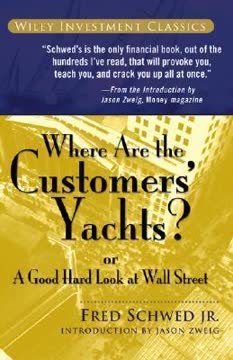Key Takeaways
1. Irrational exuberance drives speculative bubbles in financial markets
A situation in which news of price increases spurs investor enthusiasm, which spreads by psychological contagion from person to person, in the process amplifying stories that might justify the price increases and bringing in a larger and larger class of investors, who, despite doubts about the real value of an investment, are drawn to it partly through envy of others' successes and partly through a gambler's excitement.
Feedback loop mechanism. Speculative bubbles are driven by a self-reinforcing cycle of investor enthusiasm and price increases. This process typically begins with a precipitating factor, such as technological innovation or economic policy changes, which sparks initial price increases. As prices rise, more investors are drawn in, fueled by:
- Fear of missing out (FOMO)
- Envy of others' perceived success
- Overconfidence in their ability to time the market
- Belief in "new era" narratives justifying high valuations
Historical examples. This pattern has repeated throughout history in various markets:
- 1720s: South Sea Bubble (UK) and Mississippi Bubble (France)
- 1920s: U.S. stock market boom leading to the 1929 crash
- 1990s: Dot-com bubble
- 2000s: U.S. housing bubble
Psychological factors. Irrational exuberance is sustained by cognitive biases and emotional responses:
- Confirmation bias: Seeking information that supports existing beliefs
- Herding behavior: Following the crowd
- Recency bias: Overweighting recent events and trends
- Overconfidence: Underestimating risks and overestimating abilities
2. Psychological anchors and social dynamics influence market behavior
People are ready to believe the majority view or to believe authorities even when they plainly contradict matter-of-fact judgment.
Cognitive anchors. Investors often rely on mental shortcuts and reference points when making decisions, even if these anchors are arbitrary or irrational. Key psychological anchors include:
- Recent price levels
- Round numbers (e.g., Dow 10,000)
- Historical averages
- Expert predictions and price targets
These anchors can lead to persistent mispricing and market inefficiencies.
Social influence. Market behavior is heavily shaped by social dynamics and information cascades. Investors are influenced by:
- Word-of-mouth communication
- Social proof (following the actions of others)
- Authority figures and perceived experts
- Cultural narratives and popular sentiment
The combined effect of these psychological and social factors can create powerful market momentum, driving prices far from fundamental values for extended periods.
3. Media amplifies market trends and shapes public perception
The news media are in constant competition to capture the public attention they need to survive.
Attention-grabbing narratives. The media plays a crucial role in shaping market sentiment by:
- Amplifying and spreading market-related stories
- Creating and reinforcing narratives about market trends
- Providing platforms for expert commentary and predictions
- Focusing on dramatic price movements and record-breaking events
This constant stream of information and analysis can fuel investor emotions and contribute to market volatility.
Selective reporting. Media coverage tends to emphasize:
- Short-term price movements over long-term fundamentals
- Sensational stories and extreme predictions
- Simplified explanations for complex market phenomena
- Success stories of individual investors or companies
This selective focus can distort investor perceptions and encourage speculative behavior.
Information cascades. The media can trigger and accelerate information cascades, where a large number of investors make the same decision based on the observed actions of others, rather than their own private information. This can lead to:
- Rapid spread of investment ideas and strategies
- Overreaction to news events
- Self-fulfilling prophecies in market movements
4. Historical patterns reveal the cyclical nature of market booms and busts
The bottom line appears to be that, while there is some uncertainty about the actual path of home prices, most of the evidence points to disappointingly low average rates of real appreciation of most homes.
Recurring cycles. Financial markets exhibit recurring patterns of booms and busts across different asset classes and time periods. Key observations include:
- Long-term mean reversion in valuations (e.g., price-to-earnings ratios)
- Alternating periods of investor optimism and pessimism
- Similarity in narratives justifying "new eras" across different bubbles
- Tendency for extreme valuations to be followed by poor long-term returns
Historical perspective. Analyzing long-term market data reveals:
- U.S. stock market peaks in 1901, 1929, 1966, 2000, and 2007
- Global real estate booms and busts (e.g., Japan 1980s, U.S. 2000s)
- Commodities and emerging markets cycles
Learning from history. Understanding these historical patterns can help investors and policymakers by:
- Providing context for current market conditions
- Identifying potential bubble formation
- Tempering expectations during periods of extreme valuations
- Informing risk management strategies
5. Efficient markets theory fails to fully explain market volatility
The earlier version of this plot turned out to be the centerpiece of that paper, judging from the attention that it drew. Sometimes a simple plot seems to be more disturbing than a formal analysis.
Limitations of efficiency. While the efficient markets hypothesis provides valuable insights, it fails to fully account for observed market behavior:
- Excess volatility: Stock prices fluctuate more than can be justified by changes in fundamental values
- Return predictability: Long-term returns are somewhat predictable based on valuation metrics
- Momentum and reversals: Short-term trends and long-term reversals in asset prices
- Behavioral anomalies: Persistent market inefficiencies driven by investor psychology
Evidence against efficiency. Key empirical findings challenging the efficient markets theory include:
- Variance bounds tests showing stock price volatility exceeds dividend volatility
- Long-term reversal of returns for extreme winners and losers
- Predictive power of valuation ratios (e.g., CAPE) for long-term returns
- Persistent anomalies like the value effect and momentum
Reconciling theory and evidence. A more nuanced view of market efficiency acknowledges:
- Limits to arbitrage preventing instant correction of mispricing
- Varying degrees of efficiency across different markets and time periods
- The role of investor behavior and psychology in driving market movements
6. New era thinking fuels unrealistic expectations and market overvaluation
The term new era has periodically been used to describe these times.
Recurring narratives. Throughout history, periods of market exuberance have been accompanied by beliefs in a "new era" of permanent prosperity. Common themes include:
- Technological revolutions (e.g., railroads, internet)
- Financial innovations
- Changes in economic policy or structure
- Demographic shifts
These narratives often justify extreme valuations and encourage speculative behavior.
Historical examples. New era thinking has been evident in numerous market episodes:
- 1920s: "New Era" of permanent prosperity
- 1960s: "New Economy" driven by conglomerates and technology
- 1990s: "New Paradigm" of the internet and information age
- 2000s: "Great Moderation" and housing boom
Psychological appeal. New era narratives are powerful because they:
- Provide simple explanations for complex economic phenomena
- Appeal to human desire for progress and improvement
- Justify high valuations and encourage optimism
- Create social proof as more people adopt the narrative
Investors should be cautious of "this time is different" arguments and maintain a long-term, historical perspective.
7. Behavioral finance offers insights into market irrationality
These reflections from casual observation ought to convince us that homes have not appreciated significantly over the decades.
Cognitive biases. Behavioral finance identifies numerous psychological biases affecting investor decision-making:
- Overconfidence: Overestimating one's abilities and knowledge
- Loss aversion: Feeling losses more strongly than equivalent gains
- Availability bias: Overweighting easily recalled information
- Framing effects: Being influenced by how information is presented
Understanding these biases can help explain market anomalies and investor behavior.
Limits to arbitrage. Behavioral finance recognizes that even in the presence of irrational investors, markets may not quickly correct mispricing due to:
- Implementation costs and risks of arbitrage
- Noise trader risk: Irrational investors pushing prices further from fundamental value
- Agency issues: Professional managers facing career risks from contrarian positions
Applications. Insights from behavioral finance can be applied to:
- Developing more realistic asset pricing models
- Designing better investment strategies
- Improving financial education and decision-making
- Informing regulatory policies to protect investors
8. Policy interventions can mitigate the impact of speculative bubbles
It is a serious mistake for public figures to acquiesce in the ups and downs of market valuations, to remain silent about the implications of valuations, and to leave all commentary to the market analysts who specialize in the nearly impossible task of forecasting the market over the short term and who may share interests with investment banks, broker-dealers, home builders, or realtors.
Monetary policy. Central banks can play a role in addressing asset bubbles through:
- Interest rate adjustments
- Macroprudential policies (e.g., capital requirements, loan-to-value limits)
- Clear communication about market risks and valuations
However, the effectiveness and potential side effects of these interventions are debated.
Regulatory measures. Policymakers can implement regulations to reduce speculative excess:
- Leverage limits and margin requirements
- Short-selling restrictions during market stress
- Enhanced disclosure requirements
- Circuit breakers and trading halts
Public education. Government and financial institutions can promote financial literacy and awareness of market risks through:
- Educational programs and resources
- Clear communication of market valuations and historical context
- Encouraging diversification and long-term investing
Balancing the need for intervention with maintaining market efficiency and innovation is a key challenge for policymakers.
9. Diversification and risk management are crucial for individual investors
To encourage proper risk management, the advice given by public authorities should stress more effective hedging of risks.
Beyond traditional diversification. Effective risk management goes beyond simply holding a mix of stocks and bonds:
- Geographic diversification across countries and regions
- Asset class diversification (e.g., real estate, commodities, alternatives)
- Factor diversification (e.g., value, momentum, quality)
- Time diversification through dollar-cost averaging
Hedging strategies. Investors can use various tools to manage specific risks:
- Options and futures contracts
- Inverse ETFs and short-selling
- Currency hedging for international investments
- Inflation-protected securities
Tailored risk management. Individuals should consider their unique circumstances:
- Human capital and career risks
- Real estate exposure (e.g., home ownership)
- Life stage and investment horizon
- Risk tolerance and financial goals
Developing a comprehensive risk management strategy can help investors navigate market volatility and achieve long-term financial success.
10. Understanding bubbles is essential for navigating financial markets
Speculative bubbles are not, to my mind, about the craziness of investors. They are rather about how investors are buffeted en masse from one superficially plausible theory about conventional valuation to another.
Bubble identification. While precise bubble prediction is challenging, investors can look for warning signs:
- Rapid price appreciation disconnected from fundamentals
- Widespread belief in "new era" narratives
- Increased speculation and leverage
- Heightened media attention and public enthusiasm
Navigating bubble markets. Strategies for investors during potential bubbles include:
- Maintaining a long-term perspective and avoiding FOMO
- Gradually reducing exposure to overvalued assets
- Implementing stop-loss orders or other risk management tools
- Seeking out undervalued assets or contrarian opportunities
Learning from past bubbles. Studying historical episodes can provide valuable lessons:
- The importance of valuation and mean reversion
- The role of leverage and financial innovation in amplifying bubbles
- The potential for contagion across markets and economies
- The psychology
Last updated:
FAQ
What's Irrational Exuberance about?
- Exploration of Market Bubbles: Irrational Exuberance by Robert J. Shiller examines the psychological and cultural factors that contribute to speculative bubbles in financial markets, focusing on stocks, bonds, and real estate.
- Historical Context: The book places current market behaviors in historical perspective, analyzing past bubbles and crashes to understand recurring patterns of investor behavior.
- Psychological and Cultural Factors: Shiller emphasizes the role of human psychology, media influence, and societal attitudes in driving market trends, suggesting these factors often lead to irrational investment decisions.
Why should I read Irrational Exuberance?
- Understanding Market Dynamics: The book provides insights into the psychological mechanisms driving market fluctuations, helping investors make informed decisions.
- Historical Lessons: It offers valuable lessons from past market bubbles, aiding readers in recognizing similar patterns in current markets to avoid potential pitfalls.
- Expert Analysis: Written by Nobel laureate Robert J. Shiller, the book combines rigorous economic analysis with accessible writing, making complex concepts understandable for a broad audience.
What are the key takeaways of Irrational Exuberance?
- Bubbles Are Psychological: Speculative bubbles are largely driven by psychological factors, such as herd behavior and overconfidence, rather than fundamental economic indicators.
- Role of Media: Media coverage can amplify market trends, creating a feedback loop that encourages further speculation and investment.
- Need for Caution: The book serves as a cautionary tale, urging skepticism of overly optimistic market narratives and consideration of potential market corrections.
What are the best quotes from Irrational Exuberance and what do they mean?
- "Irrational exuberance is the psychological basis of a speculative bubble.": This quote encapsulates the central thesis, emphasizing that investor psychology plays a crucial role in creating and sustaining market bubbles.
- "The story in every country is different, reflecting its own news.": Highlights the idea that local narratives and cultural contexts significantly influence market behavior.
- "Speculative bubbles are not so easily ended.": Suggests that once a bubble is formed, it can persist for a long time, complicating efforts to predict when it might burst.
How does Robert J. Shiller define a speculative bubble in Irrational Exuberance?
- Psychological Epidemic: A speculative bubble is a situation where news of price increases spurs investor enthusiasm, spreading through psychological contagion.
- Amplification of Stories: As more investors become involved, they amplify stories that justify the price increases, drawing in even more participants.
- Difficult to Predict: Bubbles are inherently unpredictable, driven by collective investor behavior rather than rational assessments of value.
How does Irrational Exuberance explain the role of media in financial markets?
- Amplification of Trends: Media plays a critical role in amplifying market trends by focusing on sensational stories and creating narratives that resonate with the public.
- Creating Attention Cascades: Media can initiate attention cascades, where a single news event leads to widespread public interest and further speculation in the market.
- Influencing Investor Behavior: By shaping public perceptions and expectations, media coverage can significantly influence investor behavior, often leading to irrational decision-making.
What are the structural factors contributing to market bubbles according to Irrational Exuberance?
- Technological Advances: Innovations, such as the Internet, can create excitement and optimism that drive up asset prices.
- Cultural Shifts: Changes in societal values, like increased materialism and the glorification of wealth, contribute to speculative behavior.
- Economic Conditions: Favorable conditions, such as low interest rates and strong corporate earnings, create an environment ripe for bubbles to form.
What psychological factors does Shiller identify in Irrational Exuberance?
- Herd Behavior: Investors tend to follow the crowd, leading to collective overconfidence and speculative buying.
- Emotional Decision-Making: Emotions, such as fear of missing out and envy, drive investors to make irrational choices that inflate asset prices.
- Cognitive Biases: Various cognitive biases affect investor judgment, including overconfidence and the tendency to ignore risks during market booms.
How does Irrational Exuberance relate to the concept of efficient markets?
- Critique of Efficient Market Hypothesis: Shiller challenges the hypothesis, arguing that markets are not always rational and can be influenced by psychological and cultural factors.
- Bubbles as Evidence: The existence of speculative bubbles serves as evidence that markets can deviate significantly from rational pricing based on fundamentals.
- Need for Regulation: Understanding the irrational aspects of markets may necessitate regulatory measures to protect investors and stabilize the financial system.
What are the implications of Irrational Exuberance for individual investors?
- Caution in Investing: Shiller advises caution and skepticism of market trends, especially during rapid price increases.
- Awareness of Psychological Traps: Investors should be aware of psychological traps, such as herd behavior and overconfidence, that lead to poor decision-making.
- Long-Term Perspective: The book encourages a long-term investment perspective, emphasizing the importance of understanding market fundamentals over short-term trends.
How does Shiller suggest investors can protect themselves from market bubbles?
- Diversification: Shiller recommends diversifying investments across different asset classes to mitigate risk and reduce exposure to any single market bubble.
- Education and Awareness: Emphasizes the importance of educating oneself about market dynamics and being aware of psychological factors influencing investment decisions.
- Skepticism of Optimism: Investors should maintain a healthy skepticism of overly optimistic market narratives and be prepared for potential corrections in asset prices.
How does Irrational Exuberance challenge traditional economic theories?
- Critique of Efficient Markets: Shiller challenges the efficient markets hypothesis, arguing that markets are often influenced by psychological factors rather than being purely rational.
- Behavioral Finance Perspective: Introduces concepts from behavioral finance, emphasizing the importance of understanding human behavior in economic decision-making.
- Historical Evidence: Uses historical examples to illustrate how market behavior can deviate from rational expectations, highlighting the need for a broader understanding of market dynamics.
Review Summary
Irrational Exuberance explores market bubbles and behavioral economics, challenging efficient market theories. Shiller argues that psychology plays a significant role in price fluctuations, often disconnected from fundamentals. While some readers found the book insightful and prophetic, others criticized it as dry and repetitive. Many appreciated Shiller's historical analysis and cautious approach, though some felt it lacked actionable investment advice. The book's warnings about overvalued markets and irrational investor behavior remain relevant, especially in light of recent market events.
Similar Books










Download PDF
Download EPUB
.epub digital book format is ideal for reading ebooks on phones, tablets, and e-readers.





